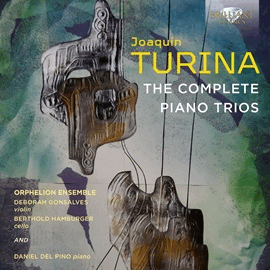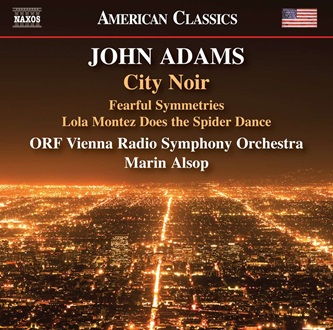Dieses monographische Adams-Programm beginnt mit City Noir, dem Komponisten nach « eine Sinfonie, die von dem besonderen Ambiente und der ganz eigenen Stimmung der sogenannten ‘Noir’ Filme aus Los Angeles inspiriert wurde. (…) Meine Musik ist eine Hommage nicht in erster Linie an die Filmmusik dieser Zeit, sondern eher an die grundsätzlichere Ästhetik dieser Ära. »
Der erste Satz, The City and Its Double, ist ein bizarres, lautes Klanggebilde mit flatterhaften Streichern, mächtigen Blechbläser-Akkorden sowie Melodiefetzen in einer dominant sehr rhythmischen und drängenden Musik. Der zweite Satz ist etwas ruhiger, insgesamt aber düster und geheimnisvoll. Der dritte Satz, Boulevard Night, ist laut Adams « eine Studie über die Farben des Kinos. Manchmal, wie im stimmungsvollen Trompetensolo von Chinatown zu Beginn, ist sie sehnsüchtig und nächtlich; manchmal, wie in der ruckartigen, hustenden Stop-Start-Motorenmusik in den Stakkato-Streichern, ist sie animalisch und pulsierend; und manchmal, wie in dem schlüpfrigen, gewundenen Saxophonthema, das immer wieder auftaucht, jedes Mal mit einer zusätzlichen Schicht Bühnen-Make-up, ist sie unverfroren und ungehobelt. » Das Stück wird in der brillanten Interpretation von Marin Alsop sehr wirkungsvoll.
Fearful Symmetries stammt aus Adams’ minimalistischer Zeit, und ist, wie der Komponist sagt « ein sehr aerobes Stück, ein Pantagruel-Boogie mit einem treibenden, schleifenden Beat, der mindestens zwei Drittel seiner Länge bestimmt. » In einer gewissen Seite kann man es mit Ravels Bolero vergleichen, dem wohl ersten minimalistischen Stück der Musikgeschichte. Marin Alsop gelingt hier eine fesselnde, tranceartige Aufführung mit einem packenden Drive.
Das kurze, nur sechs Minuten lange Lola Montez Does the Spider Dance ist Marin Alsop gewidmet und wurde später Teil der Oper Girls of the Golden West. Die Musik beschreibt den akrobatischen Tanz der irischen Tänzerin Lola Montez (1821-1861). Das RSO Wien gibt einmal mehr sein Bestes, um diese Musik brillant und spannungsvoll zu spielen.
This monographic Adams program begins with City Noir, which, according to the composer, is « a symphony inspired by the particular atmosphere and mood of the so-called ‘noir’ films of Los Angeles. (…) My music is not primarily a tribute to the film music of the time, but rather to the more fundamental aesthetic of the era. »
The first movement, The City and Its Double, is a bizarre, loud sonic structure of fluttering strings, powerful brass chords, and scraps of melody in a predominantly very rhythmic and urgent music. The second movement is a bit quieter, but still dark and mysterious. The third movement, Boulevard Night, is, according to Adams, « a study in cinematic colors, sometimes, as in the moody Chinatown trumpet solo near the beginning, it is languorous and nocturnal; sometimes, as in the jerky stop-start coughing engine music in the staccato strings, it is animal and pulsing; and other times, as in the slinky, sinuous saxophone theme that keeps coming back, each time with an extra layer of stage makeup, it is in- your-face brash and uncouth. » The piece is most effective in Marin Alsop’s brilliant interpretation.
Fearful Symmetries, comes from Adams’ minimalist period, and, as the composer says, “it is for sure a seriously aerobic piece, a Pantagruel boogie with a thrusting, grinding beat that governs at least two-thirds of its length. » In some ways, it can be compared to Ravel’s Bolero, arguably the first minimalist piece in music history. Marin Alsop succeeds here in creating a compelling, trance-like performance with a gripping drive.
The short Lola Montez Does the Spider Dance, only six minutes long, is dedicated to Marin Alsop and later became part of the opera Girls of the Golden West. The music describes the acrobatic dance of the Irish dancer Lola Montez (1821-1861). The Vienna RSO once again does its best to play this music brilliantly and excitingly.


















